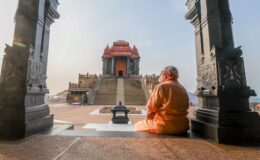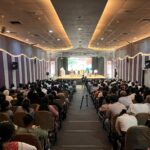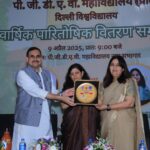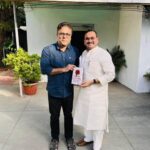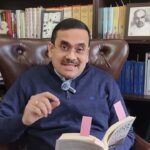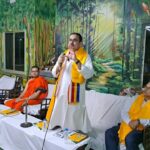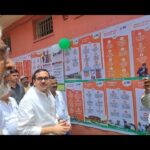CELEBRATION OF INDIAN CULTURE
- By : Anirban Ganguly
- Category : Articles
Historically, India has sought to evolve methods of education that would recognise the country’s rich repository of arts, theatre, drama, music. A sense of those past efforts was tangible at the HRD Ministry’s Kala Utsav, which was launched in Delhi on December 8
The effort to integrate culture in education has always exercised the minds of educationists, education philosophers and practitioners over the ages in India. If one were to look at the national education movement in India in the early decades of the last century — which had intellectual stalwarts such as Sri Aurobindo, Acharya Satish Chandra Mukherjee, Gurudev Rabindranath Tagore and Ananda Coomaraswamy, among others, leading it — one sees how intensively it discussed or experimented with ways through which India’s rich cultural experience and traditions could be integrated in education.
The urge was to evolve methods of education that would recognise India’s rich repository of arts, theatre, drama, music and seek to design a programme that would open that vibrant Indian world of art and culture before young Indians educated. A number of attempts were made, the Swadeshi art movement, the focus on art education in Visva Bharati at Santiniketan, the fine blending of culture and education in Sri Aurobindo’s Integral Education were some of the manifestations of that quest for cultural education.
A sense of that past effort made by some of our most vibrant minds lingered when the Kala Utsav — the festival of the arts — a flagship effort by the Ministry of Human Resource Development to integrate culture in education took off to a colourful start at Bal Bhavan in the national capital on December 8. Celebrating cultural richness and diversity, involving young learners by generating in them a deep interest to imbibe and master the various living art forms of India, encouraging them to become exponents of those art forms and nurturing them to appreciate and internalise the colours and artistic expressions from across the country are some of the overarching goals of this gigantic cultural effort.
It offered an opportunity for students and for all those involved, to understand the inter-relationship and inter-dependence of disciplines. The celebratory spirit of cultural discovery, acceptance and assimilation was evident all around when children reached out to each other in a genuine and unsullied spirit of celebration. As HRD Minister Smriti Irani observed, while inaugurating the festival, that children have come to the Utsav in a competitive spirit but will go back with a cooperative spirit having absorbed the cultural colours and artistic expressions of each other’s regions and traditions.
The National Curriculum Framework 2005 in its recommendation on education of Arts (Music, Dance, Theatre, Visual Arts and Crafts) and the Central Advisory Board of Education sub-committee on Integration of Culture education in the School Curriculum had in fact suggested the need for such a programme that would not only nurture cultural talent from far and wide but would also act as a forum for a greater cultural blending and understanding among young minds. Coordinated by the nodal National Council of Education Research and Training and mentored and supported by the Union Human Resource Development Ministry, the Kala Utsav initiative, for the first time, has generated an occasion which shall gradually turn into a mighty cultural flow.
Over 1,600 hundred students converged from across the country for the festival, each one determined to demonstrate their cultural talents, capacities through a mastery of their traditions. Children with an intense cultural sense have come from government schools that operate in far-flung and marginal districts of the country. Each state has participated and has sent in their teams while the other special feature of the festival is the participation of a large number of specially-abled children whose enthusiasm was hard to miss. Some have asked how will the common student benefit from such an exercise — the answer is that the entire exercise is meant for the less privileged and ‘common’ student so that she/he can demonstrate their uncommon talent and potentials and absorb as much as they can India’s rich and pulsating artistic traditions.
Some very interesting dimensions stand out in the effort and these need flagging lest they be missed out by the moment-obsessed observer or the superficial analyst. It was a unique experience to see how, at the suggestion of Prime Minister Modi, another flagship effort that of saving and educating the girl child — Beti Bachao Beti Padhao — received primacy through these cultural expressions. It was interesting as well as moving to see how traditional art forms — theatre for example — were used to spread this crucial message of our times. The student’s troupe from Assam’s Nagaon district used the Ankia Naat, a 17th century theatre form preserved and developed by the Sattras, to come up with a play to spread the message of ‘Padhe Chalo, Badhe Chalo’ — learn and educate yourself and move ahead. With great energy, music, song and enactment the children spread a contemporary message using the traditional Ankia Naat.
Similarly, children from Goa argued, through the medium of their traditional folk drama the Dashawatari Kalo, how saving and educating the girl child and treating her as an equal was so cardinal to our social well-being and balance. The team from Haryana, for example, enacted the traditional Haryanavi Suang and through a spirited performance explained the imperativeness of the call for Beti Bachao, Beti Padhao. Similarly children from Sikkim like their counterparts from Himachal Pradesh, Andaman & Nicobar and Tripura enacted plays with the same message.
The other defining feature of the Kala Utsav is the aspect where students have actually gone and interacted with masters of traditions and have directly learnt from them the details techniques and then, working on their own, have composed dramas, paintings, songs and dances centered on a relevant social and educational theme. The masters too, many observed, were delighted that young learners were eager to imbibe their traditions — traditions that often faced neglect — and anxious to perpetuate them. The focus on online cultural projects in which students researched and documented the background of the art, its origin, their interaction with practitioners and demonstrated the process through which they came up with their creations, was another attention arresting feature of this festival. Prime Minister Modi had launched the Kala Utsav website on Teachers’ Day earlier this year.
The celebrated battery of experts who were invited from all parts of the country to judge the performances were themselves delighted to be part of the effort. The teacher’s exuberance emerged in celebrated artists such as Pandit Debu Chaudhuri, Rani Khanam, Nelliyode Vasudevan Namboodiri, Satish Anand, Nigombam Jadumani Singh, Niranjan Goswami, among others, who had gathered to see and judge these young talents. Pandit Debu Chaudhuri in fact spoke the thoughts of those senior artists gathered there when he said that at last an effort was being made to integrate art in education and it was a unique attempt and occasion. As Prime Minister Modi said, the Kala Utsav, “has been a wonderful confluence of art, culture & music” which “will go a long way in showcasing our culture & connecting people from all the parts of India”, indeed that connect was palpable.
Over a century back, Ananda Coomaraswamy had lamented how the education that prevailed in India then, destroyed in the “great majority of those upon whom it is inflicted, all capacity for the appreciation of Indian culture”. He would have surely rejoiced to witness how that destroyed capacity was now sought to be gradually reinstated.
The message of the Kala Utsav, then, is the restoration of those cultural capacities in future generations and minds.



